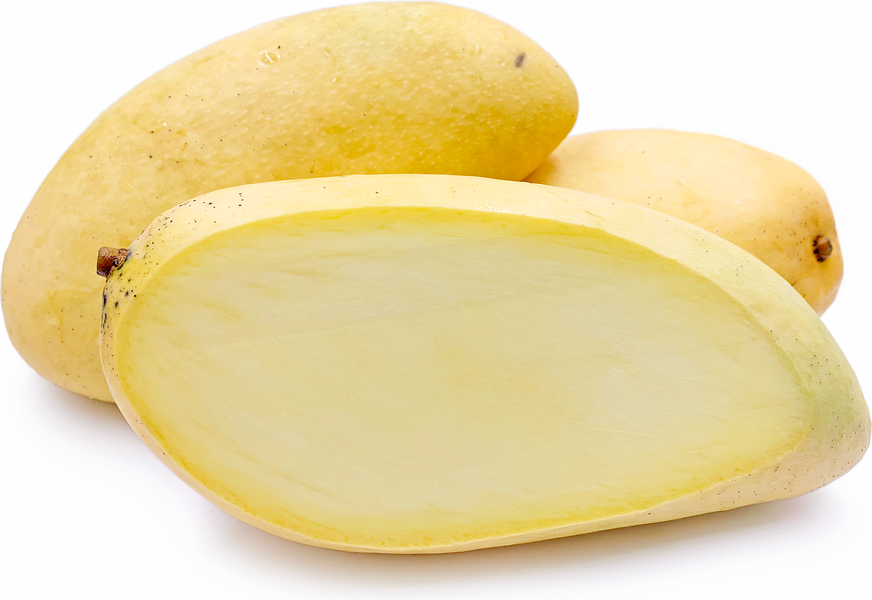


King Mangoes
Estimated Inventory, lb : 0
Description/Taste
King mangoes ripen from green to yellow-orange with a pink blush. They are oblong in shape and grow to 16 to 18 centimeters in length. They typically weigh from 250 to 350 grams. When cut open, King mangoes emit a tropical fragrance. Each mango bears a flat inner seed that is white in color. The inner flesh is a bright orange yellow, and is juicy and buttery in texture. The flavour is sweet, with just a hint of pleasant sourness.
Seasons/Availability
King mangoes are available in the late spring to early summer months.
Current Facts
King mangoes are botanically classified as Mangifera indica. 'King' is a name used interchangeably for the Rainbow mango in Singapore. They are also known as Maha Chanok mangoes elsewhere in the world. They are a hybrid between Thailand's nang klang wan and sunset mango cultivars, and are especially prized for their non-fibrous flesh.
Nutritional Value
King mangoes contain vitamin B, vitamin C, beta carotene, calcium, phosphorous and antioxidants.
Applications
King mangoes are best eaten fresh, out of hand. Cut them lengthways, and discard the inner seed. They may be used in smoothies and fruit salads, and can be used as a topping for ice creams. King mangoes tend to degrade quickly, and are best eaten as soon as they ripen. To store King mangoes, leave them at room temperature until the outer flesh is yellow. They may be placed in a loose bag in the refrigerator for a couple of days to lengthen their storage time.
Ethnic/Cultural Info
King mangoes are said to be one of the most popular non-green mangoes in Thailand -- a country known for its great appreciation of mangoes and where there are festivals dedicated to the fruit.
Geography/History
King mangoes are are likely to have originated in Thailand, where they are widely cultivated. They are now found throughout Southeast Asia, and are found as rare imports in the United Kingdom and the United States.








